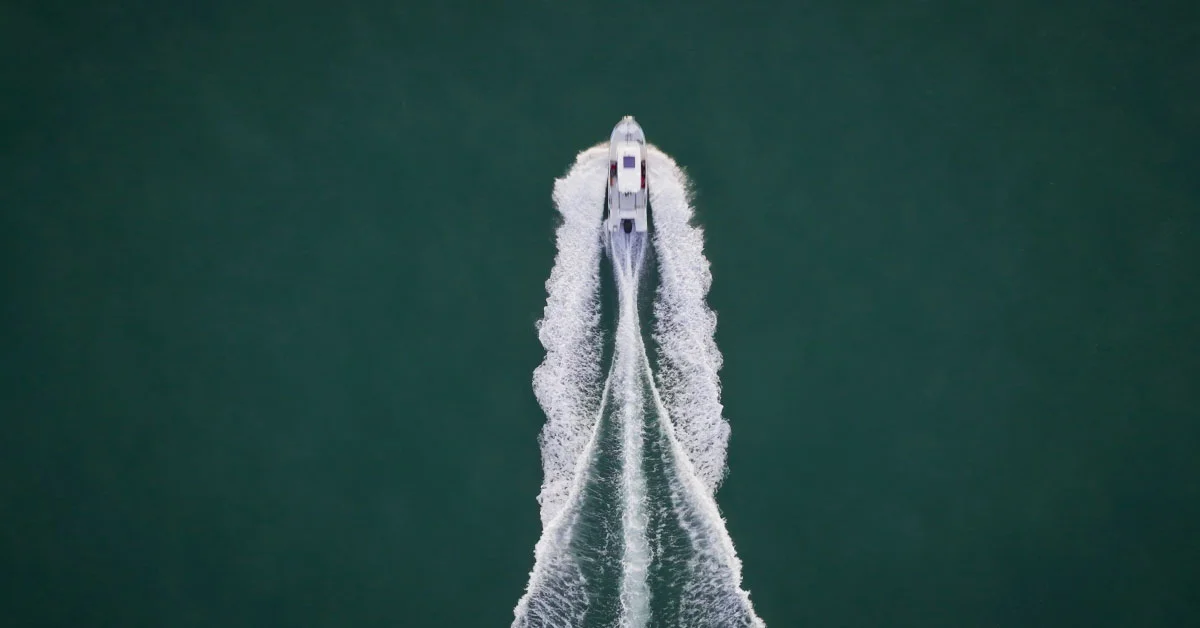During the winter period in January 2020, a friend and I are on the lookout for any information about wrecks suitable for catching very big Atlantic pollack. A tale of a fruitful search.
A single objective: set a new record
During a review of the previous season with a friend, we decide to venture towards new horizons and explore wrecks far offshore that potentially have seen very few lines in their history. The search focuses on the waters off Dieppe, regardless of the distance, between Le Havre and Dunkirk. A single objective: beat a new Pollack record.
Choosing fishing spots for big pollack
Big pollack mainly reside on the largest structures offshore in depths of over 35 meters. We scour our wreck directories, yet again. We particularly focus on wrecks that we have never explored, the largest sunken cargo vessels near the rising and falling currents. These are the deeps of the Pas-de-Calais Strait where maritime traffic is one of the densest in the world, with nearly 400 ships per day on average and peaks at 800!
Each wreck identified as potentially good undergoes thorough research regarding its history, the date of the shipwreck, the type of boat, its orientation, and possibly accounts from divers who have already visited them. Wrecks off Boulogne, Calais, and Dunkirk quickly appear from the English side, and we also search in British directories.
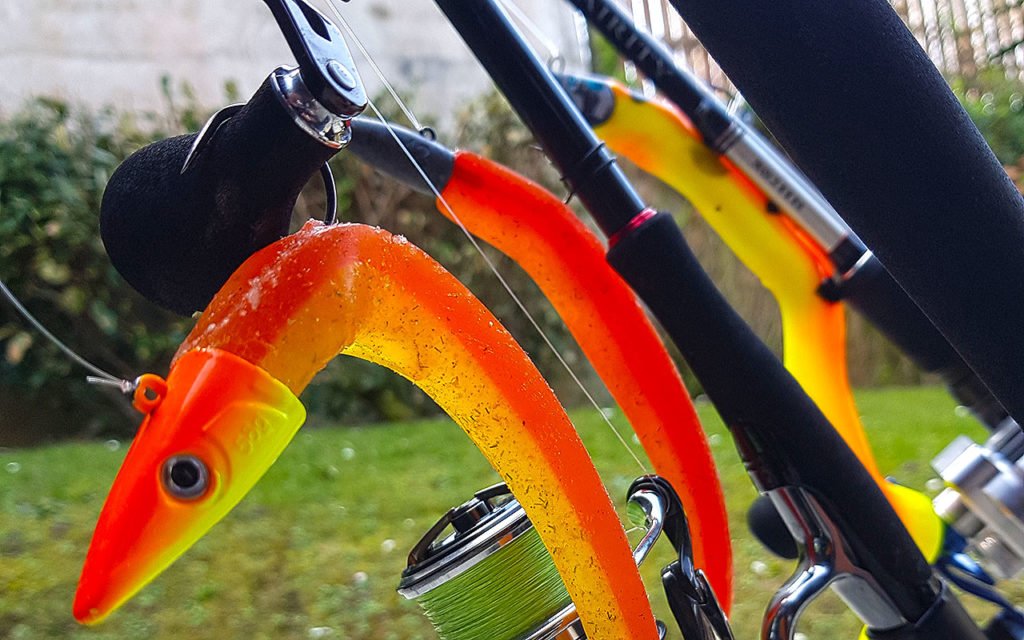
Simultaneously, I methodically prepare the lures for this trip to be ready to face all conditions. We set the date for an initial exploration. Given the limited weather windows, we set multiple dates and monitor the weather daily. The first fishing trip starts from Dunkirk during a small tidal coefficient. My friend puts his boat in the water at Grand-Fort-Philippe, and we head directly offshore, minimizing stops that would waste our time. Temperatures hover around 0°C. But soon enough, a generous sun appears, and we immediately feel the comfort benefit.
First stop offshore Dunkirk: big pollack of 4 kg
We let the lines go on a first wreck at a depth of 40 meters. I opt for a 23 cm lure armed with a 50 g “darting” weighted head while my friend explores with a 12 cm vibrating lure (a shad) with a 42 g head. Thus, we work together to find the right strategy more quickly.
The first observation is that the day after a gust of wind, the water seems relatively dense with particles even offshore. It’s not certain that visibility will be very good at the bottom. After two or three timid touches, we reel in a small cod and decide to explore the next wreck.
During navigation, we notice a change in clarity on the surface that could well make a difference for the rest. The next wreck is a cargo ship of over 100 meters, a monster likely to shelter large predators. The current slightly strengthens, and it’s not the best time to approach the carcass. Nevertheless, on the first drift where we each let a lure descend to cross the water layer better, we slowly reel in the lines and both record a nice touch. This exploration is successful as we bring ashore two pollacks weighing around 4 kg.
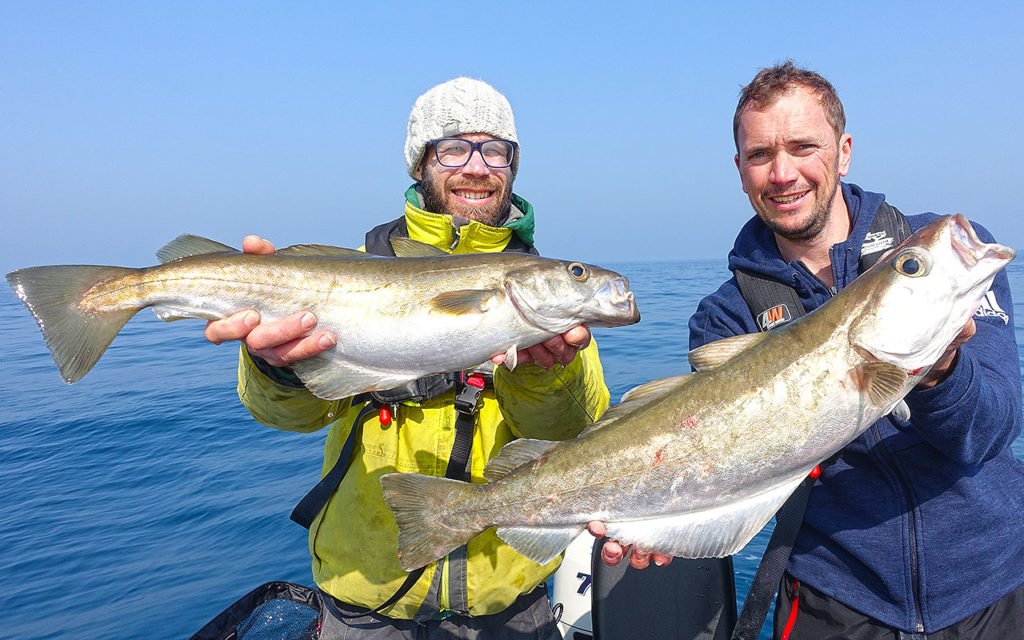
Good concentration of Pollacks but too strong a current
The visible ball on the sonar detached from the wreck seems to be a nice concentration of pollacks! On the following drift, the current accelerates further, and fishing becomes more difficult. We register a timid touch and then nothing, no sign of life. Despite increasing the weight of the weighted heads, the wreck scrolls past rapidly on the sonar, and the fish seem hidden in the carcass awaiting the tidal turn. There’s no point in insisting, so we head to the next spot to try to find a wreck communicated by diver friends on the English side.
Discovery of a new wreck in Dunkirk
Navigation is incredibly comfortable as we are fortunate to enjoy a beautiful lull after more than 15 days of unmanageable sea. Arriving in the area, we find only a small piece of wreckage. Therefore, we start a search by making increasingly larger circles around this point to create a swirl on the GPS until we find the carcass. After three laps, we find a rise of 3 meters significant enough to stop there. So, we go to the area and move slowly until discovering a substantial wreck over 8 meters high. This one appears to be perpendicular to the current. Not ideal! We are in the middle of the rising current, and we won’t be able to follow the length of the carcass.
The wreck is massive, and it seems to me that I can distinguish small detections stuck to the structure on the sonar. We take advantage of the strong current to thoroughly scan the structure with the sonar and identify it well on the map. The first drift in the middle of the current allows us to pull out an initial 3 kg pollack, which is a good omen for what’s to come. After a few drifts with heavy jigs in the strong current, it drops below 1.5 knots, and we re-rig the rods with anchovy imitations.
Big pollack up to 85 cm – 6 kg
The animation involves letting the lure drop directly below the boat onto the wreck when it appears on the sonar, and as soon as the weighted head hits the bottom, slowly retrieving it over 10 or 15 meters in height. This animation causes the pollacks lying on the bottom to rise. With scraping animations, the pollacks are almost indifferent to the lures passing under their noses. We then catch up to the current break seven big pollacks. The biggest is around 6 kg for 85 cm.
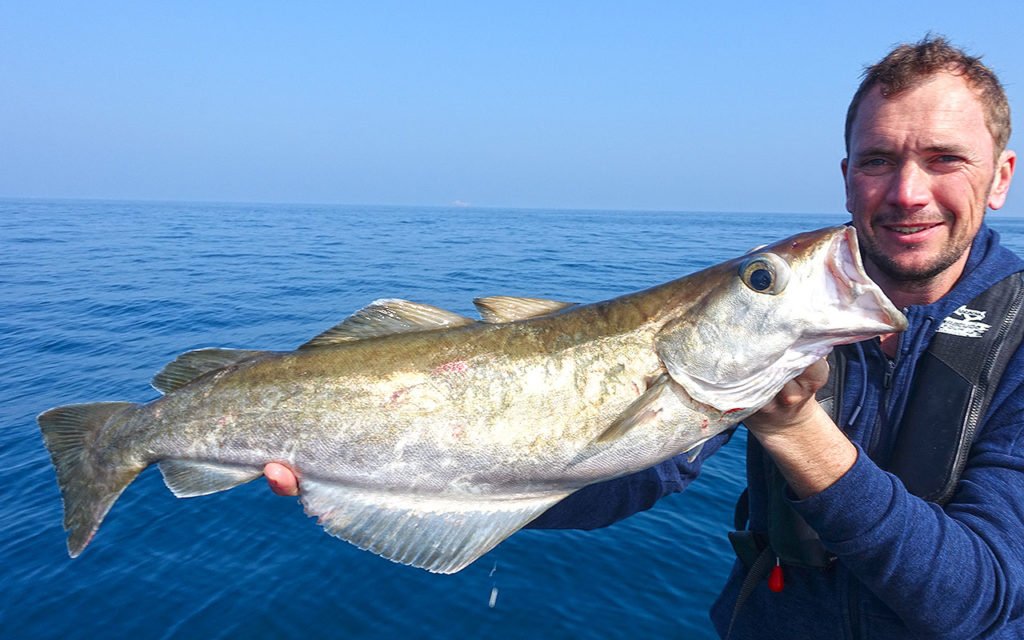
It’s a very nice catch, a trophy fish that truly pleases us. However, from these new explorations, we expect huge fish within the limits of the species’ capacities. In other words, we hope to beat our records. January is generally slow, and it’s really pleasing to catch fish averaging 4 kg. We head back thinking about the next step: an expedition from Dieppe.
Stage of Pollack Records: Dieppe
After a few days of surveying our maps and databases, we spot three large wrecks off the coast of Dieppe, two of which we have never visited. It’s a true expedition as the deep waters are located far offshore. We aim for wrecks likely to shelter record pollacks that have rarely seen the silhouette of a soft lure. This time, I host Loïc at my place in Dieppe. The weather decides the timing, and we go out during a high tidal coefficient, which is not ideal for tracking big pollacks.
This coefficient over 100 makes one pause for a moment, but the calmness is too tempting: we must go! We leave the port of Dieppe for a very long journey towards the English coast. The navigation is pleasant to cross the path of the cargo ships. But before this critical passage, we cast our lines on a huge wreck known by a few Dieppe locals. On this wreck, we catch two fish weighing over 3 kg, but they are not the big pollacks we are searching for.
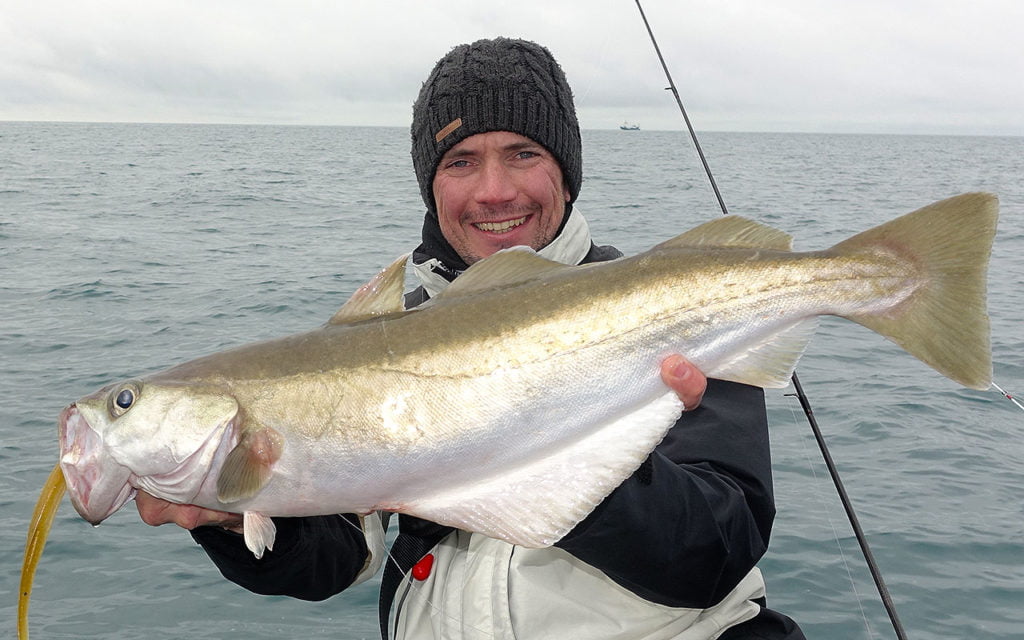
Discovery of a New Wreck
The current is still very strong, and we decide to set sail for the next wreck, which will be a real discovery. We encounter some large cargo ships that we let pass in front of us to limit the risk of getting stuck right in front of them. As you may have seen in the movie Titanic, these large units take several kilometers to stop, and one must be wise in dealing with these sea behemoths! We arrive at a carcass found by a professional fisherman that seems of significant size: over 6 meters in height.
This beautiful wreck perfectly sunk in the current axis allows us to make long drifts close to it. We rub our hands at the thought of surveying this unknown carcass, which, by the way, has no name. Our first drifts are made with precision, and we apply ourselves as never before to pull out a big fish from this wreck. Unfortunately, the strong current allows us to catch only a small pollack that swims back into the water to grow.
A fish of 96 cm
So, we go even further, a few minutes from here, to explore our third wreck. Of course, we hope the results will be better. We arrive at this one at the turning point of the rising current and immediately register touches. The first two strikes lead us to pull out pollack that are really average in terms of size. We release these fish back into the water, hoping to catch bigger ones. It’s the time of the slack tide. No matter how well we handle our animations and reduce the weight of the weighted heads and the size of the lures, nothing works.
The activity is very average… So, we return to the previous wreck where we had spotted a little more activity on the sonar. The lowering current sets in, and we begin drifts in the opposite direction. My friend records a powerful strike while he was retrieving an 18 cm slug mounted on a 50 g darting head. The fight is intense, and he is not very talkative. That’s the case when he’s impatient to discover what’s at the end of his line. I’m quite curious myself to see the fish because of its extensive head movements. Indeed, my friend lands a big pollack of 96 cm.
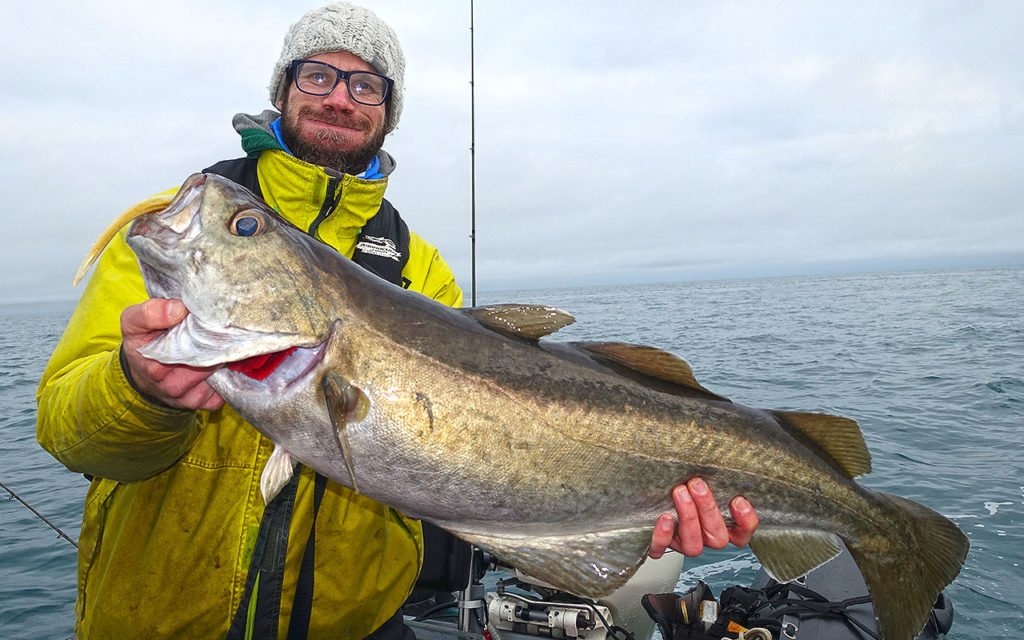
We’re delighted; it’s the culmination of our research! Quickly, we take some photos and reposition the boat because the current will intensify very quickly due to these high tidal coefficients.
The big pollack takes 10 meters, unhooks, and takes my lure again!
On the next drift, same technique, same lure, same animation. This time, it’s my turn to record a huge strike as my lure reaches mid-height. I use a 10-35 g rod and a 12/100 braided line. The fish then takes 10 meters of line; the fight is exhilarating! However, as I retrieve about 10 meters, the fish unhooks. I’m frustrated! But even though my mind is racing, I keep enough composure to resume the animation and reel in very slowly. I don’t really imagine that this fish I dragged for 10 meters would attack again. I’ve barely turned the reel three times when the fish strikes back in my hands and heads back down. The rod is so sensitive, the reel so light, the line so fine that the fish forces me to stretch my arm because the contact is direct.
Culmination, I land a pollack of one meter
Follows a magnificent fight to bring ashore a fish just as impressive as my friend’s. We place it on the fish ruler next to the other and can hardly believe what we see. It’s a one-meter-long pollack!
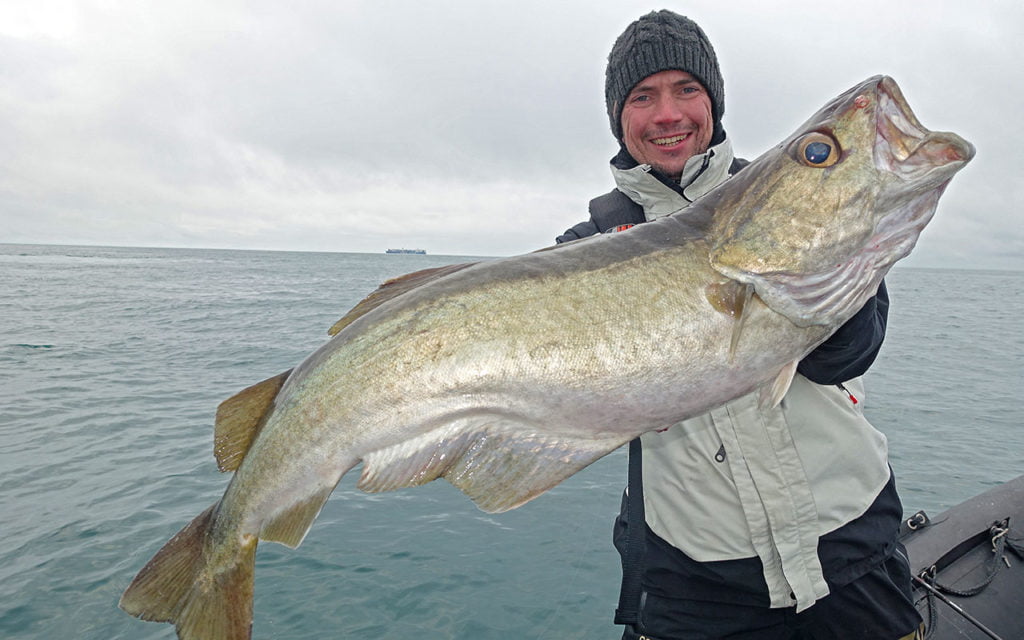
We’re like kids, completely euphoric. At this very moment, the day is a success regardless of the rest of the fishing trip. Of course, we make two or three more drifts before the current becomes too strong. Despite finding the right lure, we only catch one more fish, about 4 kg.
Rather than waiting three hours for the current to drop below 1.5 knots, we decide to head back. During the return navigation, we have stars in our eyes. Nonetheless, there’s still a long journey before rinsing the boat and my friend’s return journey. We are fully satisfied with having found the monster pollacks we aimed for. It seems wise to savor this good moment.
These two days in the heart of the winter break are worth gold! These are fishing memories that will remain etched forever. We do enjoy recounting this story over and over again.

